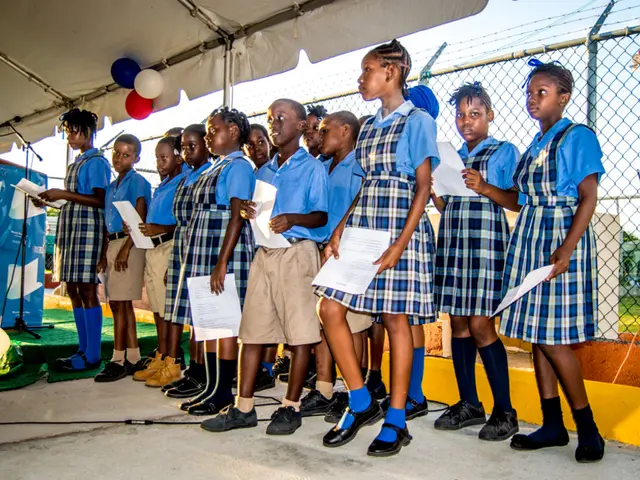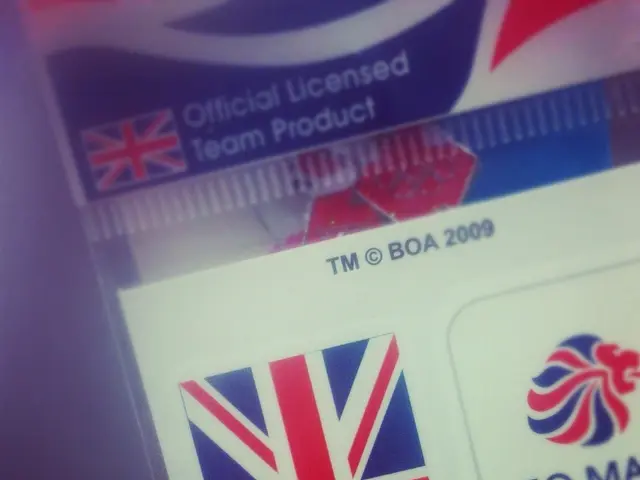Dueling opinions persist on a 2020 quantum computing manuscript by Microsoft, with some issues still pending resolution
In a significant development, the scientific journal Science has decided to replace the Editorial Expression of Concern (EEoC) on a five-year-old quantum computing paper with a correction. The paper, titled "Flux-induced topological superconductivity in full-shell nanowires," describes how nano-scale wires can be applied to a semiconductor substrate to create a topological quantum computing device, a technology subject to a Microsoft patent.
The decision comes after an institutional review found no questionable research practices by one of the authors, Charles Marcus, a former scientific director of Microsoft Quantum Lab. The main issues involved incomplete descriptions of how the devices were tuned and limited presentation of the data measured, rather than evidence of misconduct or fundamentally flawed science.
Sergey Frolov and Vincent Mourik, who initially raised concerns about the representativeness of the data in the original paper, have been investigating issues in Microsoft's research on Majorana for over five years. Their efforts have resulted in two Nature retractions, several corrections, and two expressions of concern. They maintain that the work should be retracted, but the journal Science and associated institutional investigations concluded that the paper's shortcomings were best addressed by adding a correction specifying the limits of data and methods reporting.
Microsoft and other involved parties emphasize that skepticism and discourse are integral to scientific progress. A spokesperson for Microsoft stated that they are committed to continued open discussion and engagement on their research. Despite the criticism, Microsoft continues publishing Majorana-related research.
Charles Marcus, one of the paper's authors, is delighted by the decision but wants the four years lost due to the dispute back. He believes that the problem with Microsoft is that the press release may have been over the top or inaccurate, but they are trying something really hard. He also believes that Microsoft deserves credit for throwing resources at a very hard scientific problem.
However, Marcus believes that Frolov and Mourik's debunking efforts have chilled researcher enthusiasm in the field of Majorana research. He contends that their actions have resulted in the field of Majorana research dying in the public sector. Frolov, on the other hand, is negotiating with Nature to publish concerns about recent Microsoft research.
This is the first time that a journal will roll back a positive action they previously took to alert other scientists about the pattern of problematic research, by replacing an EEoC with a correction. The correction will say that researchers did not present a full description of how they tuned the relevant devices and did not present a full catalog of the data measured.
It is important to note that Majoranas are elementary particles that researchers believe can be used for quantum computing. The technology is a precursor to Microsoft's Majorana 1 quantum chip, the validity of which has also been challenged. Other quantum computing papers from Microsoft-backed researchers have been hit with EEoCs, retractions, corrections, and expressions of concern.
In conclusion, Science's decision to replace the EEoC with a correction clarifies incomplete methodological details after institutional review cleared the authors of misconduct. The correction restores confidence in the paper’s integrity while acknowledging the data and procedural gaps initially critiqued by Frolov and Mourik. The incident underscores the importance of open dialogue, transparency, and rigorous scientific scrutiny in the field of quantum computing.
- Science's decision to replace the EEoC with a correction signifies a significant step in quantum computing's scientific field, addressing incomplete methodological details.
- The correction, as a result of an institutional review, clears the authors of any misconduct allegations but acknowledges data and procedural gaps initially criticized by Sergey Frolov and Vincent Mourik.
- The paper's focus is on the application of nano-scale wires to a semiconductor substrate for the creation of a topological quantum computing device, a technology subject to a Microsoft patent.
- The journal Science's decision is a testament to the importance of open dialogue, transparency, and rigorous scientific scrutiny in the field of technology and science.
- Microsoft, one of the involved parties, has emphasized the role of skepticism and discourse in scientific progress, stating their commitment to continued open discussion and engagement on their research.
- In the field of Majorana research, Charles Marcus, one of the paper's authors, believes the criticism and debunking efforts by Frolov and Mourik have reduced researcher enthusiasm and potentially led to the decline of the public sector's involvement in the field.
- Frolov, on the other hand, is currently negotiating with Nature to publish his concerns about recent Microsoft research, continuing his efforts in addressing issues within the Majorana research.
- Microsoft's Majorana 1 quantum chip validity has also been challenged, compounded by EEoCs, retractions, corrections, and expressions of concern in other quantum computing papers from Microsoft-backed researchers.
- Ai and technology advancements, such as quantum computing, play a crucial role in various sectors, including healthcare and sports with applications in fitness-and-exercise, mental-health therapies-and-treatments, nutrition, and sports-betting.
- These advancements also have implications for career-development, education-and-self-development, and general-news segments, reshaping industries like crime-and-justice and sports.
- In the world of sports, American football particularly American Football League (NFL) and football, benefit from data-and-cloud-computing, skills-training, and technology advancements, leading to improved game performance and player safety.




